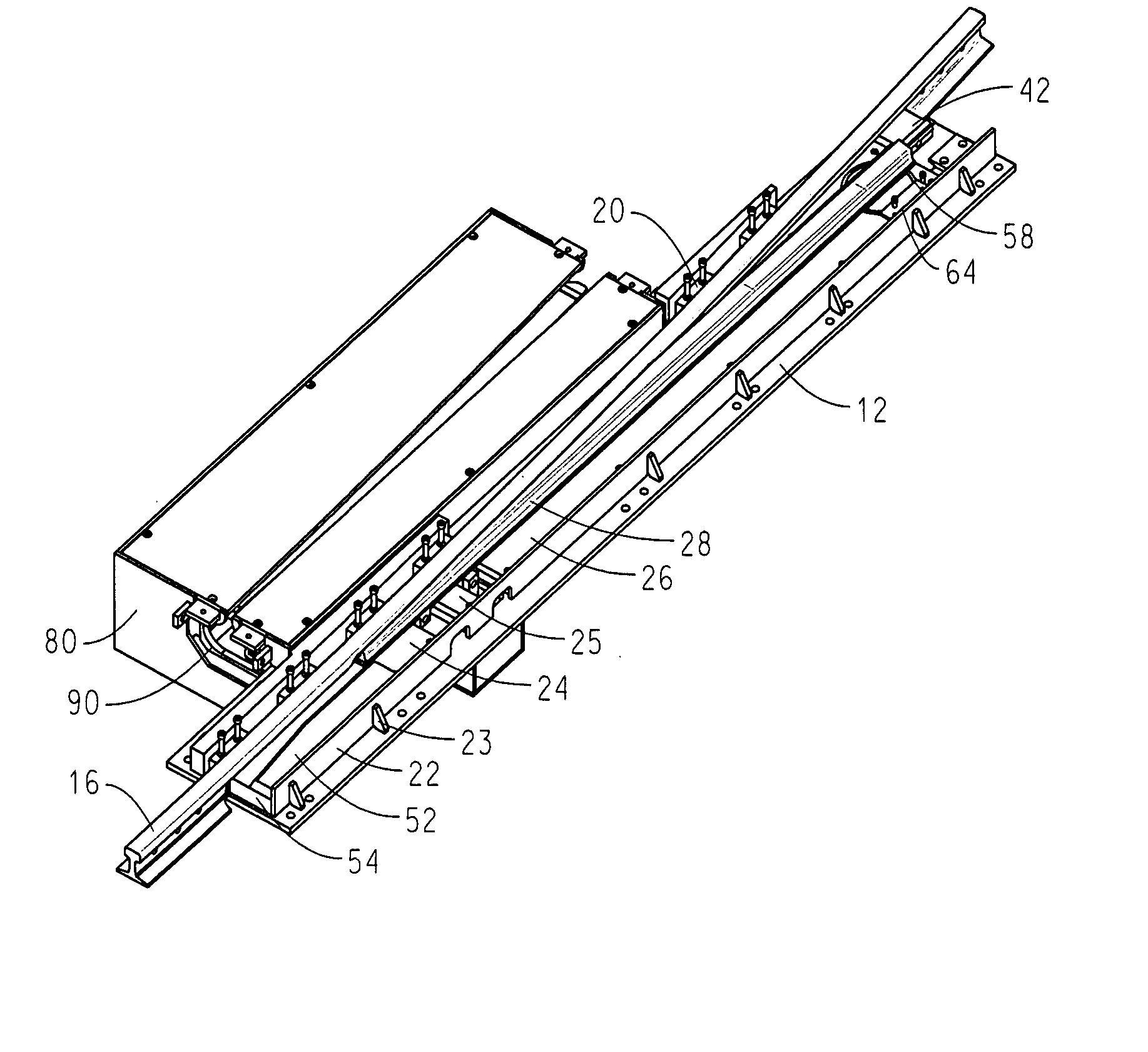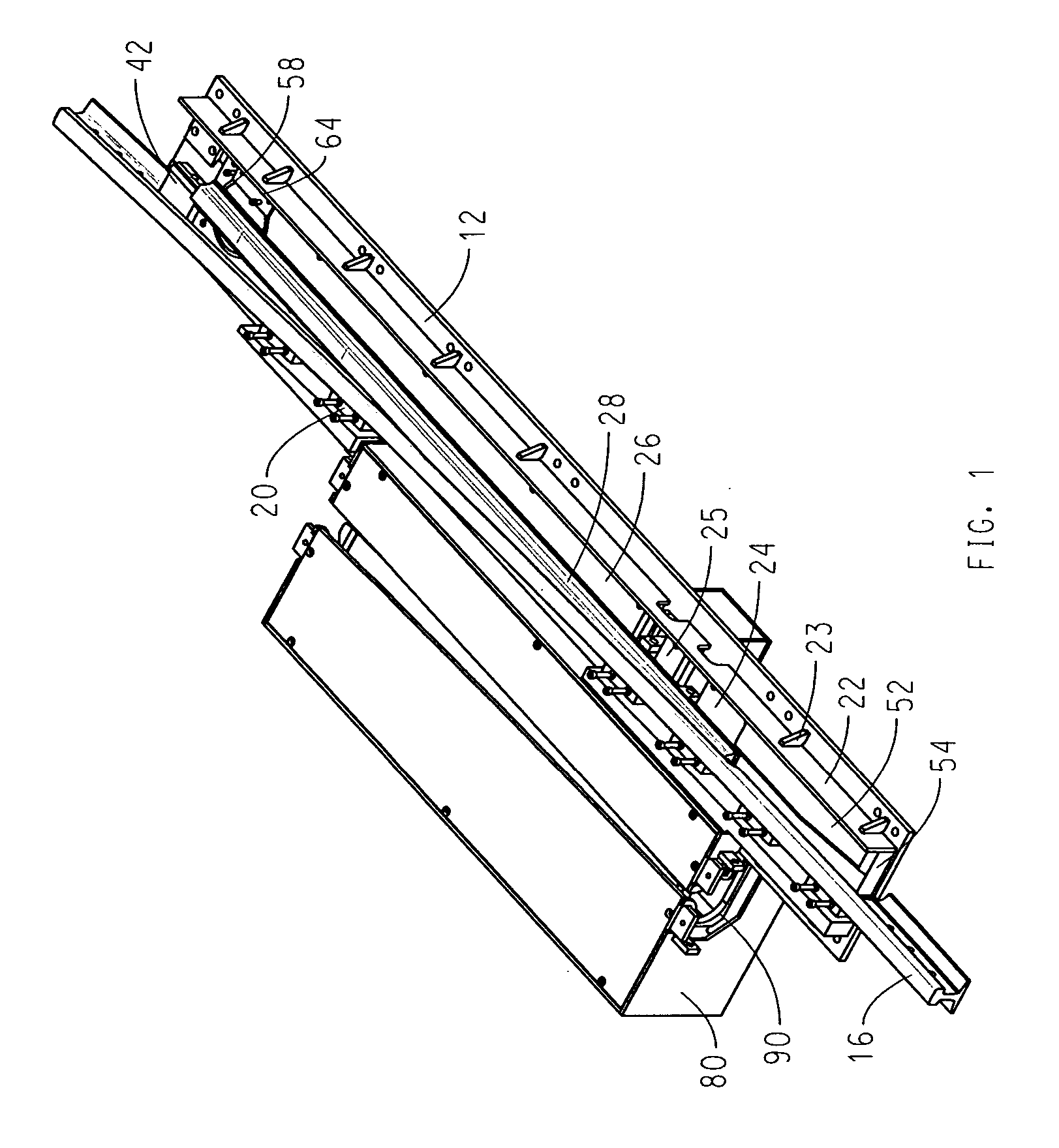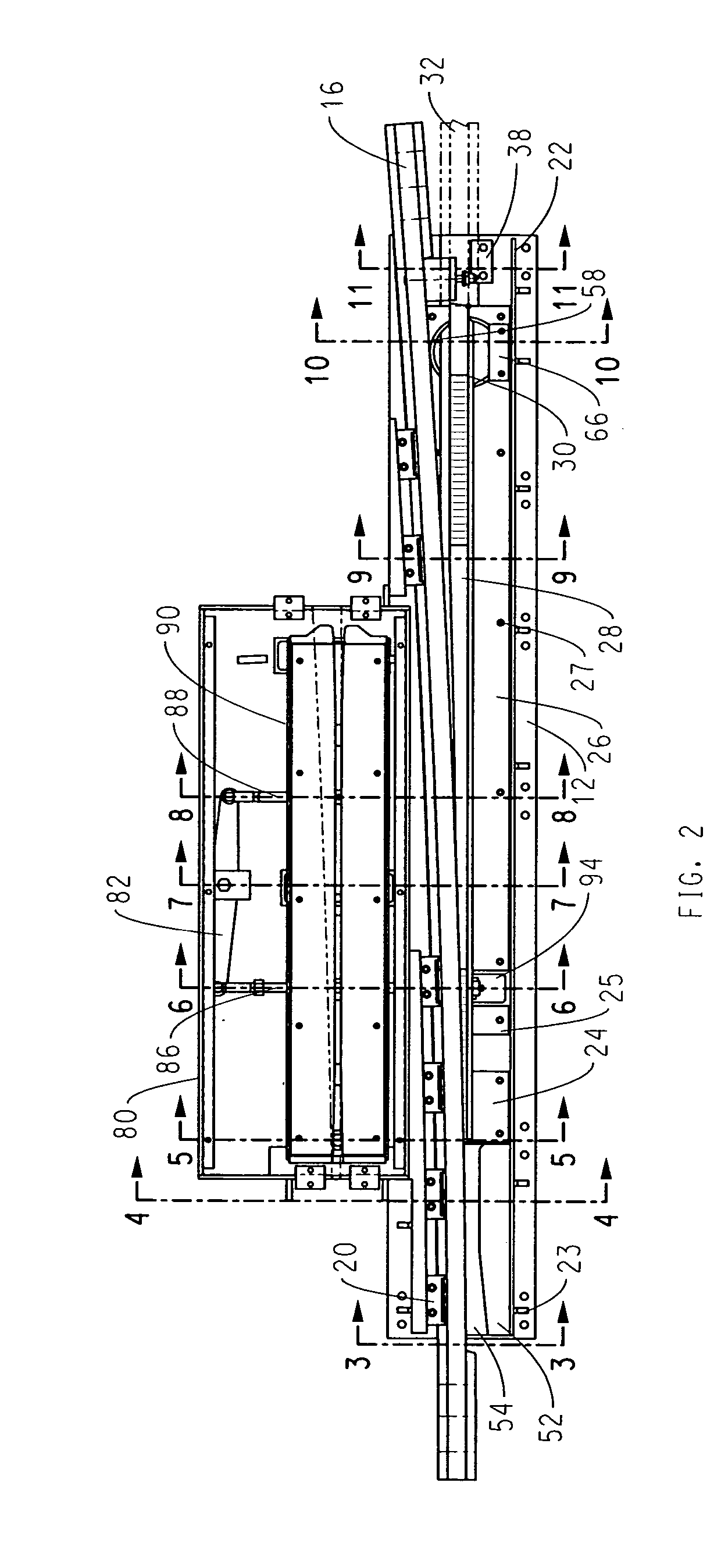Tongue switch
a tongue switch and tongue technology, applied in the direction of rail switches, roads, constructions, etc., can solve the problems of affecting the service life of the tongue switch, the assembly must be replaced, and the movement of the tongue tends to wear the underlying surface of the assembly, so as to achieve convenient transportation, installation, replacement and maintenance.
- Summary
- Abstract
- Description
- Claims
- Application Information
AI Technical Summary
Benefits of technology
Problems solved by technology
Method used
Image
Examples
Embodiment Construction
[0046]FIGS. 1, 2 and 2a show the preferred embodiment of the assembly of the invention, as inserted into a section of embedded or paved trackwork, for use with an electrically-powered train.
[0047] The switch generally rests on base plate 12. Bed plate sections 13, 14, 15 are welded on top of base plate 12, as seen in FIG. 12. Stock rail 16 is seated on base plate 12 and is held in place by rail seat 18 that has been machined into base plate 12 and by floating brace block assemblies 20, as seen in FIG. 3. Referring again to FIGS. 1, 2, and 2a, concrete barrier plate 22 keeps the surrounding concrete out of the switch. Gussets 23 stiffen concrete barrier plate 22. Slide plate sections 24, 25, 26 are bolted on top of corresponding bed plate sections 13, 14, 15 by bolts 27 (see FIGS. 5 and 7 for illustrations of the connections between slide plate sections 24, 26 and base plate sections 13, 15 respectively). A tongue 28, pivoted at its heel 30, pivots across the surface of slide plate ...
PUM
 Login to View More
Login to View More Abstract
Description
Claims
Application Information
 Login to View More
Login to View More - R&D
- Intellectual Property
- Life Sciences
- Materials
- Tech Scout
- Unparalleled Data Quality
- Higher Quality Content
- 60% Fewer Hallucinations
Browse by: Latest US Patents, China's latest patents, Technical Efficacy Thesaurus, Application Domain, Technology Topic, Popular Technical Reports.
© 2025 PatSnap. All rights reserved.Legal|Privacy policy|Modern Slavery Act Transparency Statement|Sitemap|About US| Contact US: help@patsnap.com



